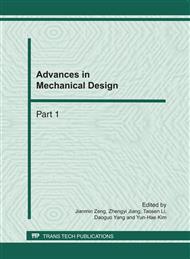p.1165
p.1171
p.1175
p.1180
p.1185
p.1192
p.1196
p.1200
p.1206
Modal Stiffness Contributions of Components to Full Truck
Abstract:
In recent years, three optimal methods, size, shape and topological optimization, have been widely applied to the automotive component design and significant success have been achieved. However, most of the optimizations are limited to deal with the individual component of the truck. Because there exists the complex coupling relations between components under the assembly environment of the truck, it is difficult to deal with the component design by using the above three optimal method and it is necessary to develop a more effective method for solving the complex optimal problem under the assembly environment of full truck. To this end, the paper introduces the modal stiffness concept and develops the modal stiffness contributions of components to full truck which can identify which components are the key ones for controlling the modal frequencies. The present method is applied to a full truck analysis. The results obtained show that the proposed method is effective and the computation process is straightforward. The results can be directly used to improve the component design of full truck as a valuable guide.
Info:
Periodical:
Pages:
1185-1191
Citation:
Online since:
February 2011
Authors:
Price:
Сopyright:
© 2011 Trans Tech Publications Ltd. All Rights Reserved
Share:
Citation:


